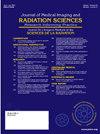Are we sleepwalking into a fully automated medical imaging service?
IF 1.3
Q3 RADIOLOGY, NUCLEAR MEDICINE & MEDICAL IMAGING
Journal of Medical Imaging and Radiation Sciences
Pub Date : 2025-04-29
DOI:10.1016/j.jmir.2025.101969
引用次数: 0
Abstract
Introduction
Artificial intelligence (AI) is already embedded in medical imaging services, but now that the National Institute for Health and Care Excellence (NICE) has released position statements looking favourably on AI use in healthcare, its use will embed even further.
Discussion
AI has brought many positives to medical imaging services and is far superior at making calculations using vast amounts of data. It can therefore help improve the speed and accuracy of diagnosis and treatment plans for many patients, but at what cost to the radiography profession? Surveys have shown that the majority of the workforce welcome AI, but admit that they don’t fully understand the principles behind it. AI developers are keen to improve patient output, and many are unconcerned about the possible negative effects on staff morale and expertise. As computers remove the autonomy and competency that radiographers have previously held with pride, staff may find that they become de-skilled and de-motivated, and it may eventually subsume the traditional role of the radiographer altogether. The profession needs to be aware of these potential impacts and prepare accordingly.
Conclusion
Higher education plays an important role in preparing radiographers of the future for the changing landscape of medical imaging and should include more engineering and data science modules in the curriculum to prevent radiographers from becoming irrelevant.
我们是在梦游进入全自动医疗成像服务吗?
人工智能(AI)已经嵌入到医疗成像服务中,但现在,国家健康与护理卓越研究所(NICE)已经发布了有利于人工智能在医疗保健中的应用的立场声明,它的使用将进一步嵌入。人工智能为医学成像服务带来了许多积极因素,并且在使用大量数据进行计算方面远远优于人工智能。因此,它可以帮助提高许多患者的诊断和治疗计划的速度和准确性,但对放射专业来说代价是什么?调查显示,大多数员工欢迎人工智能,但承认他们并不完全理解人工智能背后的原理。人工智能开发人员热衷于提高病人的产出,许多人并不担心对员工士气和专业知识可能产生的负面影响。由于计算机剥夺了放射技师以前引以为傲的自主权和能力,工作人员可能会发现他们变得缺乏技能和动力,最终可能会完全取代放射技师的传统角色。专业人士需要意识到这些潜在的影响,并做好相应的准备。结论高等教育在培养未来的放射技师以应对不断变化的医学成像环境方面发挥着重要作用,应在课程中加入更多的工程和数据科学模块,以防止放射技师变得无关紧要。
本文章由计算机程序翻译,如有差异,请以英文原文为准。
求助全文
约1分钟内获得全文
求助全文
来源期刊

Journal of Medical Imaging and Radiation Sciences
RADIOLOGY, NUCLEAR MEDICINE & MEDICAL IMAGING-
CiteScore
2.30
自引率
11.10%
发文量
231
审稿时长
53 days
期刊介绍:
Journal of Medical Imaging and Radiation Sciences is the official peer-reviewed journal of the Canadian Association of Medical Radiation Technologists. This journal is published four times a year and is circulated to approximately 11,000 medical radiation technologists, libraries and radiology departments throughout Canada, the United States and overseas. The Journal publishes articles on recent research, new technology and techniques, professional practices, technologists viewpoints as well as relevant book reviews.
 求助内容:
求助内容: 应助结果提醒方式:
应助结果提醒方式:


